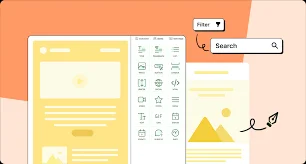Introduction
Creating email campaigns from scratch every time can be time-consuming and resource-intensive. Modular email templates offer a smarter approach by allowing marketers to design reusable content blocks that can be assembled for different campaigns. This not only speeds up email creation but also ensures brand consistency, simplifies testing, and enhances overall efficiency. In this article, we’ll explore how modular email templates can help you save time while improving the effectiveness of your marketing efforts.
Why Modular Templates Are a Game-changer for Email Marketing
You’re running an eCommerce brand that sends weekly promotional emails. Without modular templates, different designers might use slightly different fonts, colors, or button styles, making emails feel inconsistent. With modular emails, you create a set of approved content blocks—like headers, product showcases, and footers—all designed to match your brand guidelines. When a marketer builds a new email, they simply drag and drop these pre-designed blocks, ensuring every email looks and feels the same. For example, a fashion retailer might use a fixed layout for showcasing new arrivals, keeping images and text aligned perfectly each time. This approach saves time while keeping your brand identity strong, no matter who creates the email.
Build Once, Use Everywhere – The Power of Reusable Blocks
You’re designing an email for a holiday sale. You create a festive header with your brand’s logo, colors, and tagline. Instead of remaking it for every email, custom modular email template services allow you to save it as a reusable block. Next time, whether it’s a product launch or a newsletter, you simply drag and drop the same header, ensuring consistency and saving time, you save it as a reusable block. Next time, whether it’s a product launch or a newsletter, you simply drag and drop the same header—keeping your brand’s look consistent. Now, think about your call-to-action buttons. If you always use a bold red button with white text, saving it as a block ensures every email follows the same style. Even footers with social links and legal disclaimers stay uniform. By building these once and reusing them, your emails always feel like they belong to the same brand, no matter the message.
Faster Testing and Optimization Without Rebuilding Emails
Say you’re running an email campaign for a new product. Instead of rebuilding the whole email, you can test different headlines—one emphasizing a discount, another highlighting key features—by swapping out just the header block. The same goes for call-to-action buttons. You might try “Shop Now” in blue versus “Get Yours Today” in red. Since it’s a reusable block, you can switch it instantly without touching the rest of the email. Even product layouts can be tested—one using a grid of images, another featuring a single standout product. With modular templates, testing becomes quicker and more efficient, helping you fine-tune your emails without disrupting your brand’s overall look and feel.
Scaling Email Production Without Extra Resources
Imagine launching multiple email campaigns for different promotions. Instead of waiting on a designer for every new email, your team can quickly put together messages using pre-built content blocks. A marketer can drag in a pre-approved header, add a product showcase, and drop in a CTA—no coding required. Need to tweak a seasonal offer? Swap out just the promo block while keeping the rest of the email intact. Even as your campaigns grow, your team moves faster without extra resources. By making email creation accessible to everyone, modular templates cut down production time, keep designs consistent and free up designers for more strategic work.
Keeping Brand Consistency Across All Your Emails
When multiple people create emails, brand consistency can slip—one might use a different shade of your brand color, and another might choose the wrong font. Modular templates solve this by locking in design elements like logos, typography, and button styles. Say a team member builds a promotional email. Instead of manually adjusting fonts and colors, they simply drag in pre-designed blocks—ensuring every email looks and feels the same. Even footers, social links, and legal disclaimers remain uniform. Whether it’s a sales announcement or a newsletter, every email aligns with your brand’s identity. With modular templates, your emails always look professional, no matter who puts them together.
Automating Workflows for Even More Efficiency
Sending a promotional email where each subscriber sees different products based on their past purchases. With modular templates and automation, you don’t have to create multiple versions—dynamic content blocks adjust automatically based on user data. A customer who browsed sneakers might see a featured shoe collection, while another interested in jackets gets a tailored selection—all within the same email template. Even subject lines or CTA buttons can change based on segmentation. By combining modular design with automation, you cut down manual work while delivering highly personalized content. This makes email production faster, more efficient, and scalable, so your team can focus on strategy rather than repetitive tasks.
Conclusion
Modular email templates are a powerful way to streamline your marketing efforts. By leveraging reusable content blocks, you can save time, maintain brand consistency, and optimize campaign performance without extra resources. Whether you’re scaling email production or personalizing content for different audiences, modular templates make the process faster and more efficient. Investing in a modular approach now can give your marketing team the flexibility and speed needed to stay ahead in a competitive landscape.







